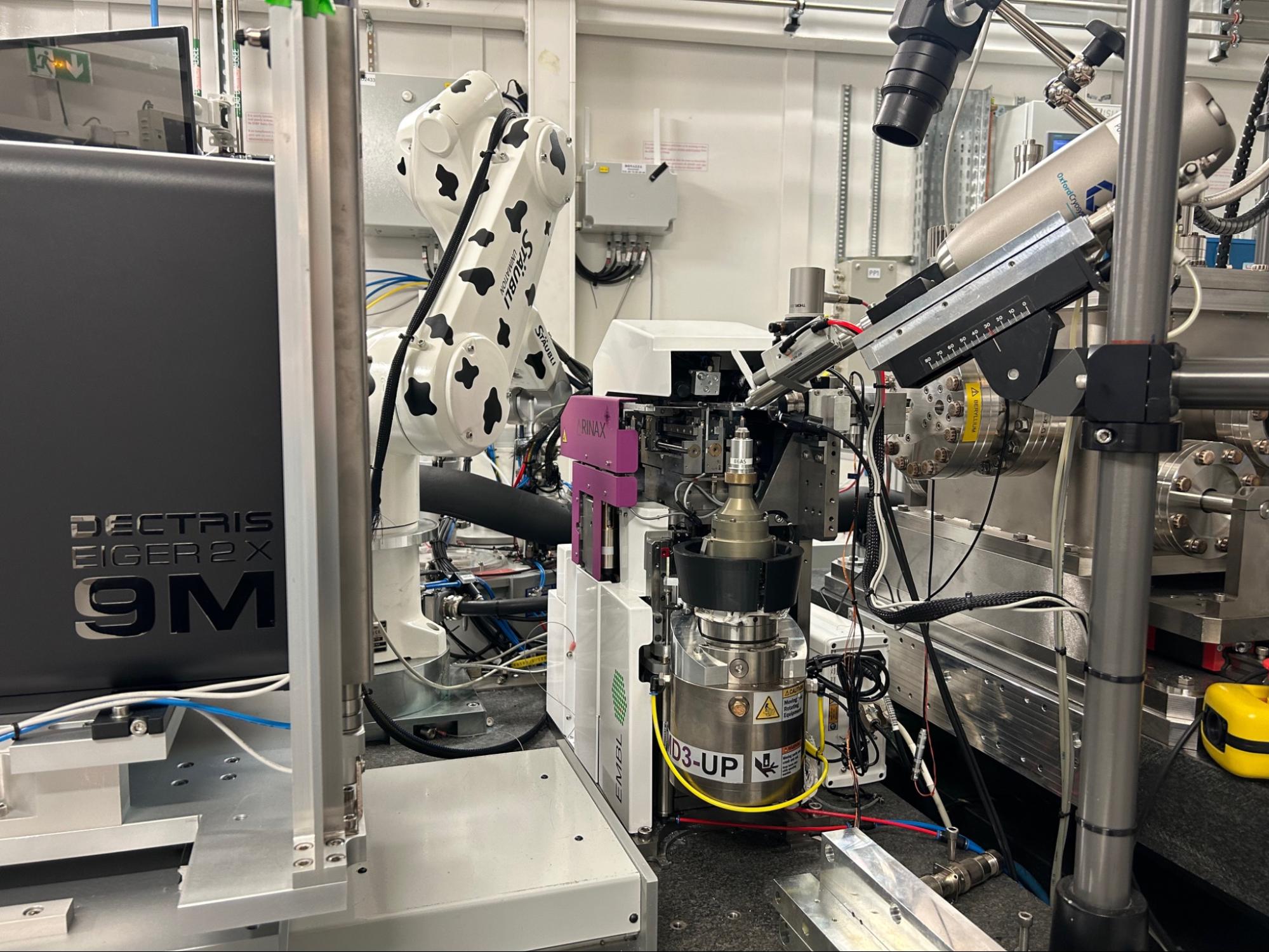In situ serial crystallography facilitates 96-well plate structural analysis at low symmetry.
IUCrJ 11 2024

The ESRF and EMBL Grenoble have a strong tradition in improving the data collection possibilities from micro-crystals. These studies led to the design and installation of a prototype MD1 on the ID13 microfocus beamline at the ESRF. The further development of this technology led to the hugely successful MD2 and MD3 family of commercially available diffractometers.
ID23-2 is a dedicated microfocus beamline for macromolecular crystallography, the first such beamline in the world, and EMBL Grenoble has provided support for ID23-2 since user operation started in 2005. The current EMBL co-responsible beamline scientist is Shibom Basu, a member of the Synchrotron Crystallography Team.
ID23-2 underwent a major upgrade in 2017 to provide high intensity X-rays with a beamsize of 4 or 10 µm2 for the most challenging structural biology projects. In order to accurately measure diffraction data from micron sized crystals in micron sized beams a high precision MD3-Up diffractometer, the first instrument of its kind, was especially developed by the EMBL Grenoble Instrumentation team. ID23-2 is also equipped with an EMBL-ESRF developed FlexHCD sample changer and an EIGER2 9M X-ray detector.
The success of ID23-2 has resulted in many new and existing synchrotrons building specialised micro-focus beamlines (e.g. Diamond and MaxLabIV in Europe and NSLS-II and APS in the US). It has been a huge success and the availability of such a specialised microfocus beamline for the European Macromolecular Crystallography (MX) community has opened up new and exciting opportunities in X-ray crystallography, such as the possibility of collecting data from ~5 μm3 crystals.
ID23-2 returned to user operation in August 2020 with exceptional X-ray characteristics following the ESRF Extremely Brilliant Source (EBS) upgrade to ensure it remains at the forefront of micro-crystallography experiments. The beamline continues to drive optimised data collection from micro-crystals, incorporating newer methods such as serial synchrotron crystallography (SSX) experiments. An in situ crystallisation plate manipulator is also available, enabling ambient temperature data collection and structure solution from difficult to crystallise systems. This setup and an ability to collect from various SSX solid supports allows ID23-2 to provide a valuable resource to probe and optimise micro crystal systems for more complex time-resolved experiments on ID29. The exceptionally flux, high precision MD3-Up and EIGER2 9M X-ray detector all together enable time-resolved experiments in the milli-second timescale to be performed on ID23-2, and this capability is currently being developed.
ID23-2 is run as a collaboration between the EMBL Grenoble Synchrotron Crystallography Team and the ESRF Structural Biology Group. See the ID23-2 webpage for more information on the technical details and the ESRF website for application details.
IUCrJ 11 2024
J. Synchrotron Rad. 29, 581-590 2022
J. Synchrotron Rad. 17, 107-118 2010
In collaboration with the Structural Biology group at ESRF, we provide access to five macromolecular crystallography beamlines and one biological small angle X-ray scattering beamline at the ESRF.